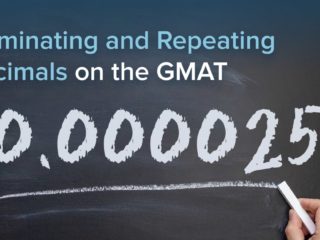Last Updated on May 6, 2023
GMAT OFFICIAL GUIDE DS
Solution:
We are given the following:
p_1 = population of District 1
p_2 = population of District 2
r_1 = the numbers of representatives of District 1
r_2 = numbers of representatives of District 2
We need to determine whether the ratio of the population to the number of representatives is greater in District 1 or District 2. We can translate the question into an inequality.
Is p_1/r_1 > p_2/r_2 ?
After cross multiplying we obtain:
Is (p_1)(r_2) > (r_1)(p_2) ?
Note that we could write the initial equation as p_1/r_1 < p_2/r_2 as well, because the question is only asking which one is greater. Whichever way we write the equation would be acceptable.
Statement One Alone:
p_1 > p_2
Although p_1 > p_2, we do not have enough information to determine whether (p_1)(r_2) is greater than (r_1)(p_2). Let’s consider two cases.
Case # 1
p_1 = 300
p_2 = 200
r_1 = 2
r_2 = 1
We see that (p_1)(r_2) > (r_1)(p_2) = 300 > 400 is not true.
Case # 2
p_1 = 300
p_2 = 200
r_1 = 2
r_2 = 2
We see that (p_1)(r_2) > (r_1)(p_2) = 600 > 400 is true.
Statement one alone is not sufficient to answer the question. We can eliminate answer choices A and D.
Statement Two Alone:
r_2 > r_1
Although r_2 > r_1, we do not have enough to determine whether (p_1)(r_2) is greater than (r_1)(p_2). Let’s consider two cases.
Case # 1
p_1 = 100
p_2 = 200
r_1 = 2
r_2 = 3
We see that (p_1)(r_2) > (r_1)(p_2) = 300 > 400 is not true.
Case # 2
p_1 = 200
p_2 = 200
r_1 = 2
r_2 = 3
We see that (p_1)(r_2) > (r_1)(p_2) = 600 > 400 is true.
Statement two alone is not sufficient to answer the question. We can eliminate answer choice B.
Statements One and Two Together:
Using the information from statements one and two we know the following:
p_1 > p_2 and r_2 > r_1. Thus, (p_1)(r_2) must be greater than (r_1)(p_2).
Answer: C



